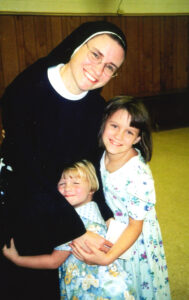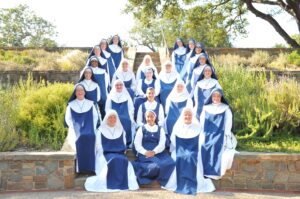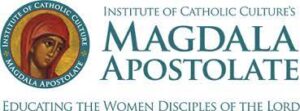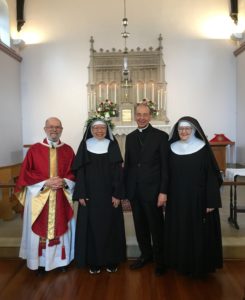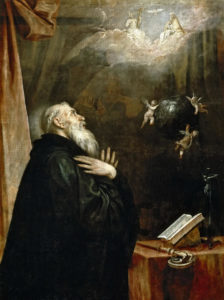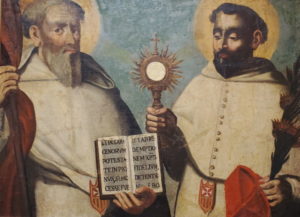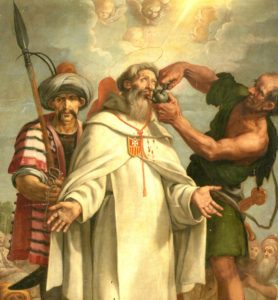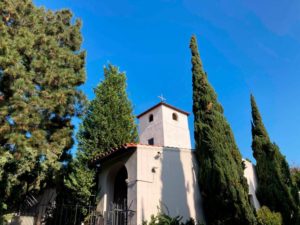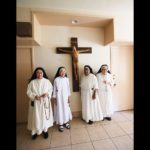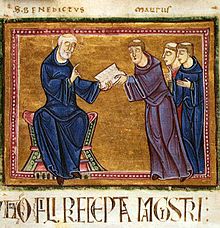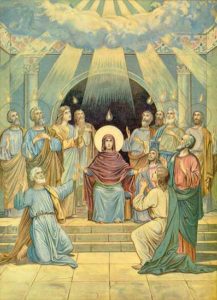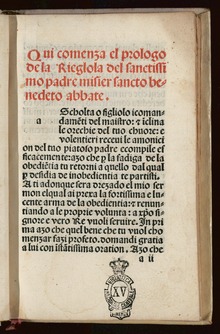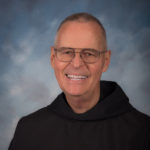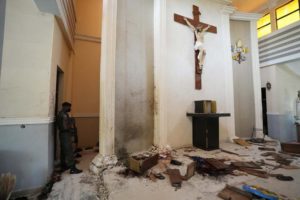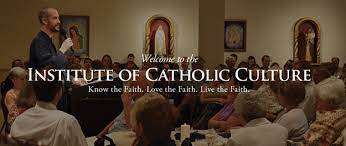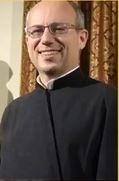 Rome, November 8, 2022
Rome, November 8, 2022
Greetings from Rome!
As I have been granted the special grace to deepen spirituality studies in Rome, permit me to share some new insights. In these days, one of our professors mentioned a conference that Cardinal Ratzinger gave once about the experience of beauty[1]. Let me share some thoughts about it and add some reflections.
The experience of beauty always draws us out from the routine of daily life and sets us in a state of amazement: the greatness of the ocean with the rhythmic breaking of the waves, the breathtaking view from the top of mountains, the power that lies in a waterfall, the variety of colors and smells of flowers, the beautiful melodies and combination of tones in music, the millions of stars that speckle the night sky, the harmony of proportion, the play of light and  combination of colors of different elements in sacred architecture, sculptures and paintings. There is so much beauty in the world! Just recently, I had several such experiences: the Coronation Mass of Mozart in Assumption Grotto parish in Detroit, and many beautiful churches here in Rome, especially St. Peter’s Basilica. Daily, thousands of tourists, many of them not even Catholics, flock these churches to admire their beauty.
combination of colors of different elements in sacred architecture, sculptures and paintings. There is so much beauty in the world! Just recently, I had several such experiences: the Coronation Mass of Mozart in Assumption Grotto parish in Detroit, and many beautiful churches here in Rome, especially St. Peter’s Basilica. Daily, thousands of tourists, many of them not even Catholics, flock these churches to admire their beauty.
Why does beauty attract us? We come from our brokenness, from the routine of daily life, we experience ugliness, corruption and sin, including our own weakness and failures. The encounter with beauty is, as Cardinal Ratzinger describes the view of Plato, “the salutary emotional shock that makes us leave our shell” and sparks our “enthusiasm” by attracting us to what is other than ourselves[2]. We have lost our original harmony, beauty and perfection, and by encountering beauty in different ways, we experience a longing in us for something that is beyond us, a longing and desire for harmony, peace, beauty and eternity, which experience is somehow “painful.” We are “wounded” by beauty.
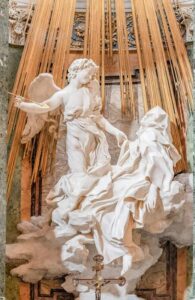 On Friday, Divine Providence had a special visit for me in store. On the way to the University – my daily journey takes around one hour from our house to the University – the bus stopped maybe 1 km away, and the bus driver told all passengers to get off the bus. It seems there was some road closure. I decided to walk and visit some churches on the way. The first one was Our Lady of Victory Church. It seems it is run by the Carmelites. On the side altar, I saw the famous beautiful sculpture of Santa Teresa while experiencing the mystical piercing of the heart” by an angel. St. Teresa was wounded by the beauty of God’s love. She describes it in her autobiography.
On Friday, Divine Providence had a special visit for me in store. On the way to the University – my daily journey takes around one hour from our house to the University – the bus stopped maybe 1 km away, and the bus driver told all passengers to get off the bus. It seems there was some road closure. I decided to walk and visit some churches on the way. The first one was Our Lady of Victory Church. It seems it is run by the Carmelites. On the side altar, I saw the famous beautiful sculpture of Santa Teresa while experiencing the mystical piercing of the heart” by an angel. St. Teresa was wounded by the beauty of God’s love. She describes it in her autobiography.
“Our Lord was pleased that I should have at times a vision of this kind: I saw an angel close by me, on my left side, in bodily form. This I am not accustomed to see, unless very rarely. Though I have visions of angels frequently, yet I see them only by an intellectual vision, such as I have spoken of before. It was our Lord’s will that in this vision I should see the angel in this wise. He was not large, but small of stature, and most beautiful—his face burning, as if he were one of the highest angels, who seem to be all of fire: they must be those whom we call cherubim. Their names they never tell me; but I see very well that there is in heaven so great a difference between one angel and another, and between these and the others, that I cannot explain it.
I saw in his hand a long spear of gold, and at the iron’s point there seemed to be a little fire. He appeared to me to be thrusting it at times into my heart and to pierce my very entrails; when he drew it out, he seemed to draw them out also, and to leave me all on fire with a great love of God. The pain was so great, that it made me moan; and yet so surpassing was the sweetness of this excessive pain, that I could not wish to be rid of it. The soul is satisfied now with nothing less than God. The pain is not bodily, but spiritual; though the body has its share in it, even a large one. It is a caressing of love so sweet which now takes place between the soul and God, that I pray God of His goodness to make him experience it who may think that I am lying. During the days that this lasted, I went about as if beside myself. I wished to see, or speak with, no one, but only to cherish my pain, which was to me a greater bliss than all created things could give me.”
The encounter with the beauty of God’s love “wounds” the soul. It’s nice and inspiring to read this account.
Actually, there are two ways of knowing God’s love[3]: through instruction (reading, study, listening to talks etc.), this is a second hand knowledge: we read the explanation of others who had an experience of the love of God, or explain it.
 The second way is: the personal experience of GOD’S love, a direct relationship with reality. This is what happened to St. Teresa. Note, that this experience is not reserved to the saints. This is actually what we are asking the Archangel Raphael, the “arrow and medicine of Divine love”, when we pray in the Supplication to the holy Angels of the Opus Angelorum: “wound our hearts, we implore you, with the burning love of GOD and let this wound never heal, so that even in daily life we might always remain upon the path of love and overcome all things through love!” We are asking the holy Archangel to help us experience GOD’S love “first hand”; we are asking for a life-changing encounter, an encounter with the beauty of GOD’S love, that leaves a “wound” in us, a longing, a desire, a happiness that pulls us out of our habitual sins of daily life, that does not allow us to fall into a routine of daily life but stirs us up again and again to lift our eyes to heaven, give us hope and joy in midst of trials and dryness.
The second way is: the personal experience of GOD’S love, a direct relationship with reality. This is what happened to St. Teresa. Note, that this experience is not reserved to the saints. This is actually what we are asking the Archangel Raphael, the “arrow and medicine of Divine love”, when we pray in the Supplication to the holy Angels of the Opus Angelorum: “wound our hearts, we implore you, with the burning love of GOD and let this wound never heal, so that even in daily life we might always remain upon the path of love and overcome all things through love!” We are asking the holy Archangel to help us experience GOD’S love “first hand”; we are asking for a life-changing encounter, an encounter with the beauty of GOD’S love, that leaves a “wound” in us, a longing, a desire, a happiness that pulls us out of our habitual sins of daily life, that does not allow us to fall into a routine of daily life but stirs us up again and again to lift our eyes to heaven, give us hope and joy in midst of trials and dryness.
We have to ask for this grace and be open to receive it and expose ourselves to God’s love, especially in prayer. The beauty of the sea, the mountains, the stars, the flowers, the music give witness of this love!
We discover Christ’s beauty in different ways when contemplating the beauty of creation. Do we not sing:
- Beautiful Saviour, King of Creation, Son of God and Son of Man! Truly I’d love Thee, truly I’d serve Thee, Light of my soul, my joy, my crown.
- Fair are the meadows, Fair are the woodlands,Robed in the flowers of blooming spring; Jesus is fairer, Jesus is purer, He makes our sorrowing spirit sing.
- Fair is the sunshine, Fair is the moonlight, Bright the sparkling stars on high;Jesus shines brighter, Jesus shines purer Than all the angels in the sky.
Jesus is beautiful, especially because in Him appears the beauty of Truth, “the beauty of God himself who draws us to himself and, at the same time captures us with the wound of Love, the holy passion (eros), that enables us to go forth together, with and in the Church his Bride, to meet the Love who calls us”[4].
But there is still another aspect which we tend to forget easily in a world that is focused on worldly pleasures.
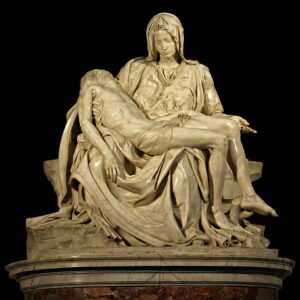 In St. Peter’s Basilica, we can see the Pieta of Michelangelo. Every day, thousands of people admire the beauty and harmony of this masterpiece of art. But why is this beautiful: a mother holding the lifeless body of her son in her arms, full of pain and sorrow? Is it not rather something that we tend to avoid? It is so attractive because it is the TRUTH, and because you can see LOVE. BEAUTY and SUFFERING do not contradict each other; in the suffering Christ we learn “that the beauty of truth also embraces offense, pain, and even the dark mystery of death, and that this can only be found in accepting suffering, not in ignoring it.”[5]
In St. Peter’s Basilica, we can see the Pieta of Michelangelo. Every day, thousands of people admire the beauty and harmony of this masterpiece of art. But why is this beautiful: a mother holding the lifeless body of her son in her arms, full of pain and sorrow? Is it not rather something that we tend to avoid? It is so attractive because it is the TRUTH, and because you can see LOVE. BEAUTY and SUFFERING do not contradict each other; in the suffering Christ we learn “that the beauty of truth also embraces offense, pain, and even the dark mystery of death, and that this can only be found in accepting suffering, not in ignoring it.”[5]
“It is precisely on the Cross that the One who in death appears to human eyes as disfigured and without beauty, so much so that the bystanders cover their faces (cf. Is 53:2-3), fully reveals the beauty and power of God’s love.”[6]
In the meditation – and not only meditation, but by exposing ourselves to it, reliving it –the Passio Domini, the Passion of Our Lord, we encounter in a very particular way the truth of the beauty of God’s love, revealed to us in the beauty of the suffering face of Jesus, so amazing, so attractive, because His love is true. Let us be wounded in this encounter with Christ’s beautiful, Crucified love, by experiencing that it is very personal! This love is especially present in the Eucharist and is poured out upon us anew every day!
Can we, then, not say: “How much He loves me, in spite of everything, how great is His love that created me, redeemed me and sanctifies me!”
With a blessing, I wish you this living encounter with God’s love, and ask your prayers,
Fr. Eusebius ORC
Website for the Canons regular of the Holy Cross: Cruzios.org
[1] CONGREGATION FOR THE DOCTRINE OF THE FAITH, “The Feeling of Things, the Contemplation of Beauty”, MESSAGE OF HIS EMINENCE CARD. JOSEPH RATZINGER TO THE COMMUNION AND LIBERATION (CL) MEETING AT RIMINI (24-30 AUGUST 2002)
[2] ibd.
[3] ibd.
[4] ibd.
[5] ibd.
[6] VITA CONSECRATA, JOHN PAUL II, 25 March 1996, n. 24
Like this:
Like Loading...
 Want to be guided throughout 2023 by the great master of the spiritual life, St. John of the Cross? Now you can do this with a never-before offered online reflection series led by Dr. Susan Muto and the Centre for Applied Carmelite Spirituality in the U.K. “This is a once-in-a-lifetime opportunity to engage with the spirituality of the 16th century mystic and writer under the direction of a world-renowned scholar,” said Fr. Alexander Ezechukwu, OCD, prior of the Oxford Carmelite Friars. “Participants will not only study St. John’s writings, but meet online on video once a month and interact with Dr. Muto,” Fr. Alexander said. The course is “The Sayings of Light and Love,” which is also the title of Dr. Muto’s forthcoming book on the spirituality of St. John of the Cross.
Want to be guided throughout 2023 by the great master of the spiritual life, St. John of the Cross? Now you can do this with a never-before offered online reflection series led by Dr. Susan Muto and the Centre for Applied Carmelite Spirituality in the U.K. “This is a once-in-a-lifetime opportunity to engage with the spirituality of the 16th century mystic and writer under the direction of a world-renowned scholar,” said Fr. Alexander Ezechukwu, OCD, prior of the Oxford Carmelite Friars. “Participants will not only study St. John’s writings, but meet online on video once a month and interact with Dr. Muto,” Fr. Alexander said. The course is “The Sayings of Light and Love,” which is also the title of Dr. Muto’s forthcoming book on the spirituality of St. John of the Cross. 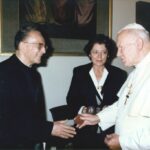 “This is a perfect way to deepen one’s prayer life, draw closer to God and neighbor, and to sit at the feet of a great leader in Christian spirituality, Dr. Muto,” Fr. Alexander said. Dr. Muto is a leader in spirituality literature as well as executive director of the Epiphany Association, and dean of the Epiphany Academy of Formative Spirituality in Pittsburgh, PA. She is the author or co-author of more than sixty books on Catholic spirituality. The Centre for Applied Carmelite Spirituality (CACS) is the world’s foremost authority on applied Carmelite spirituality. It is a place of research and training that promotes the renewal and growth of the spiritual life, drawing on the rich resources of the venerable Carmelite tradition. The Centre strives to achieve this through retreats and structured study and training programs on spirituality from the Carmelite perspective. Its flagship program, the Spiritual Direction Formation Programme, is unique and has participants from all over the world. The Centre’s goal, whether through its in-person or online services, is to bring people to experience a life-transforming friendship with God through a lived experience of Carmelite spirituality that is authentic to its biblical roots. The CACS is located at the Carmelite Priory in Oxford, UK.
“This is a perfect way to deepen one’s prayer life, draw closer to God and neighbor, and to sit at the feet of a great leader in Christian spirituality, Dr. Muto,” Fr. Alexander said. Dr. Muto is a leader in spirituality literature as well as executive director of the Epiphany Association, and dean of the Epiphany Academy of Formative Spirituality in Pittsburgh, PA. She is the author or co-author of more than sixty books on Catholic spirituality. The Centre for Applied Carmelite Spirituality (CACS) is the world’s foremost authority on applied Carmelite spirituality. It is a place of research and training that promotes the renewal and growth of the spiritual life, drawing on the rich resources of the venerable Carmelite tradition. The Centre strives to achieve this through retreats and structured study and training programs on spirituality from the Carmelite perspective. Its flagship program, the Spiritual Direction Formation Programme, is unique and has participants from all over the world. The Centre’s goal, whether through its in-person or online services, is to bring people to experience a life-transforming friendship with God through a lived experience of Carmelite spirituality that is authentic to its biblical roots. The CACS is located at the Carmelite Priory in Oxford, UK. 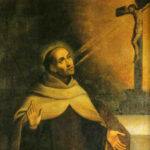 The new course, “The Sayings of Light and Love,” consists of an online video meeting on the last Tuesday of each of 12 months. It will begin on Jan. 31 and will be led by Dr. Muto and a Carmelite friar. Participants will be sent 15 sayings of St. John of the Cross each month along with discussion questions.Participants are encouraged to meditate on the sayings and even record their reflections about them in a journal in preparation for each meeting. The Centre’s online programs have been very well received. A recent Advent online retreat attracted nearly 400 members. Its publishing house, which offers print, audio and video productions, is Teresian Press Publications.
The new course, “The Sayings of Light and Love,” consists of an online video meeting on the last Tuesday of each of 12 months. It will begin on Jan. 31 and will be led by Dr. Muto and a Carmelite friar. Participants will be sent 15 sayings of St. John of the Cross each month along with discussion questions.Participants are encouraged to meditate on the sayings and even record their reflections about them in a journal in preparation for each meeting. The Centre’s online programs have been very well received. A recent Advent online retreat attracted nearly 400 members. Its publishing house, which offers print, audio and video productions, is Teresian Press Publications.  The core of Carmelite spirituality is a journey of the heart. One of the Oxford house friars has written that Carmelite spirituality is “like the exodus experience of God’s people and their meeting with the Lord in the wilderness.” St. John of the Cross, along with St. Teresa of Avila, founded the Discalced Carmelite Order in the 1500s. They cooperated in forming a spirituality that appeals to friars and other consecrated persons as well as the laity. The online reading series is for anyone wishing to deepen their spiritual life, and grow to love God and neighbor more. Sign up for the course, “The Sayings of Light and Love,” at https://www.carmelite.uk.net/online-talks-retreats/sayings-of-light-and-love-series/
The core of Carmelite spirituality is a journey of the heart. One of the Oxford house friars has written that Carmelite spirituality is “like the exodus experience of God’s people and their meeting with the Lord in the wilderness.” St. John of the Cross, along with St. Teresa of Avila, founded the Discalced Carmelite Order in the 1500s. They cooperated in forming a spirituality that appeals to friars and other consecrated persons as well as the laity. The online reading series is for anyone wishing to deepen their spiritual life, and grow to love God and neighbor more. Sign up for the course, “The Sayings of Light and Love,” at https://www.carmelite.uk.net/online-talks-retreats/sayings-of-light-and-love-series/